The Borgo Antico houses many shrines, some ancient, others more recent, some offers for all to see, other jealously guarded in internal hallways. Built by private citizens as an act of devotion or as an act of gratitude to the Saints or the Madonna for a grace received, the shrines have always been an expression of art of popular religiosity. The term “edicola” comes from the Latin aedicula, and was originally associated with the small chapels inside which were sacred image that were venerated. The shrines on road, the so-called "madonnelle" (though not all had Mary as a subject), placed in temples or the sides of buildings are part of a tradition that dates back to the Roman civilization; In fact, in those days the cult of the Lares was wide spread, so their effigy was placed on the walls of the Insulae and Domus. The function of the “edicola” was and is for those remaining a meeting point and reference for the whole neighborhood as a place of worship to pray the Rosary or simple prayers throughout the day. In the past the shrines were placed to protect a house or a street and erected by the guilds (the coronary, butchers, ortolan etc.) And women (who were called "madonnare") were entrusted the task of keeping alive the devotion and care of “edicole” with with some flowers or candles. Their value lies in being witness of the faith of the whole community and, therefore, they should be protected beyond their more or less great artistic value.
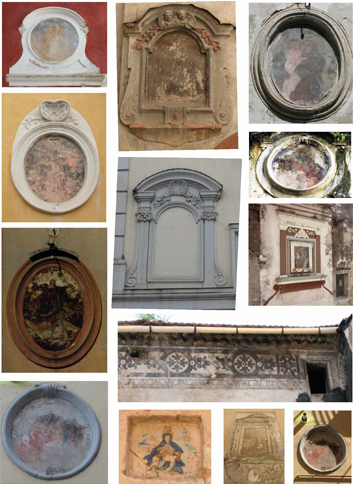
The shrines can be different in:
- a chapel. It 'a small building that, in addition to having a Holy Image that is venerated, also includes a small space where a few people can meet and frequently were also equipped with a small altar.
- Sail shaped. It is a self standing structure, made only by a wall and mostly ends with a tympanum. Usually containing a small niche containing a holy image.
- Niche. Built inside a niche, which can have different shapes, obtained mostly in the walls of houses, but also, along roads, in containment walls in the ground, such as those of public buildings.
Regarding the representations of and painting techniques, the most common were wall painting; still now it is possible to see the original paintings peeking through the newer paintings that cover the old ones. Images of ceramic or terracotta are more recent, for their peculiarities of the lasting colors, they were very common above all in the nineteenth century: these materials, even today, are used in new buildings. The most rare are the niches with the sacred image painted on canvas or paper, materials that do not lend themselves to the outside, but could be found in the chapel shrines or in the more sheltered ones built along the roads under vaulted passages. Interesting are also the stucco frames that may be more or less elaborate (with presence of floral elements, urchins, shells) depending on the time in which they were made.
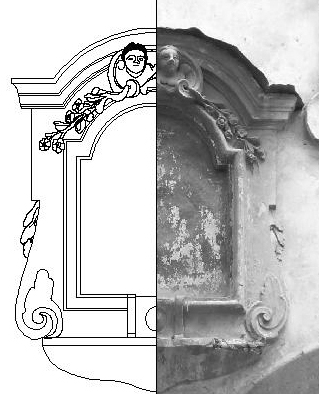
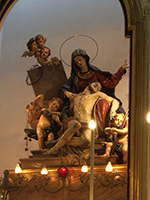
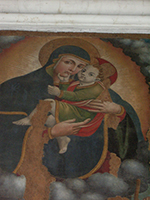
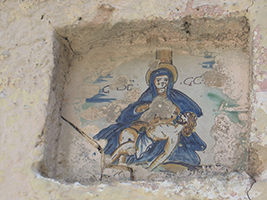
Cataloguing:
To catalogue shrines a system was created in which we tried to enter the date of the survey, all relevant information with a subsequent identification such as type, location, iconography, historical period, state of preservation, size, photographic survey (also historical). Particular importance was given in the search to the definition of the state of conservation / degradation of the various shrines that in most cases especially for the oldest was of urgent restoration work. Each shrine was dated and the state of evolution or regression was registeres. The following section illustrates, by way of example, some cataloguinging tabs and an itinerary (Fig. 4.106) that enhances the relationship between the shrines and the Old Town:

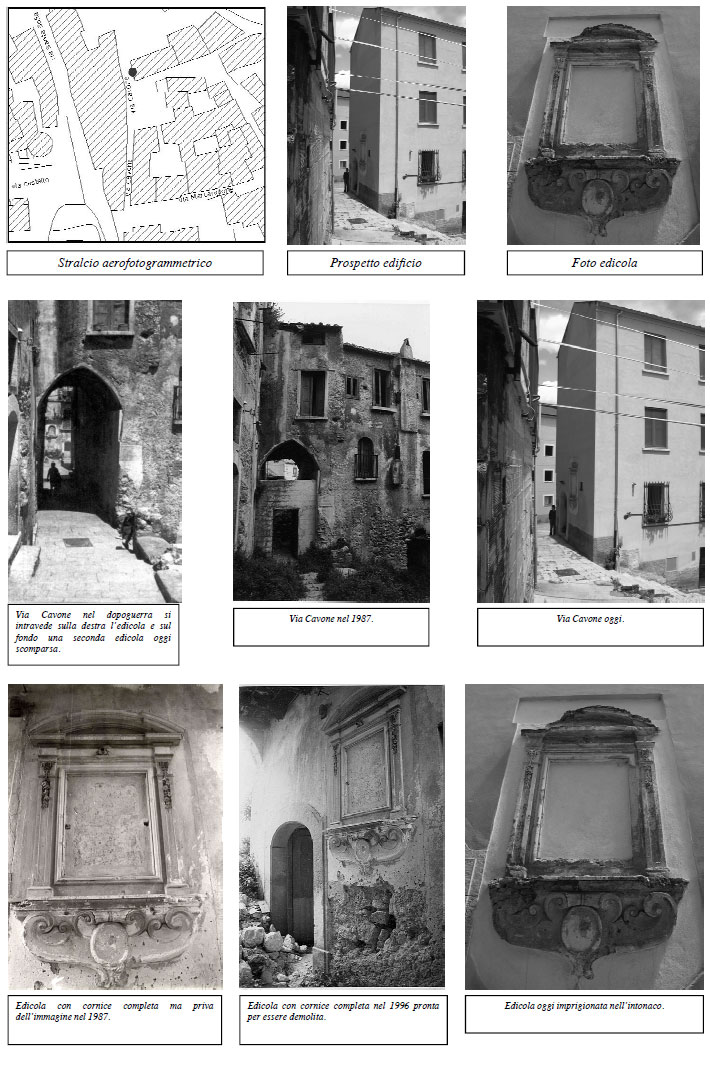
The itinerary
It begins at the church of Santa Maria della Pietà (1) and continues uphill for Corso Umberto I (the main artery of the medieval village) to Piazza San Nicola which takes its name from the church of St. Nicholas (4) it is possible to meet the first shrines placed on the facades of buildings (2.3), continuing on street Gherardo degli Angeli you first arrive at the Romano Cesareo Palace (6) and its shrine (5) a classic example of late baroque facade, and then to the church of San Biagio (7). Entering into narrow alleys, but of unique beauty, you arrive at the Palace of Marcangione (8) where you can admire the shrine of the Madonna del Carmelo. Continuing you arrive to via Cavone, which has been disfigured, but whose traces of its past splendor are the presence of the majestic remains of a shrine. Leaving via Cavone you head, through Via G. Genovese, to the Colonna Castle (10), the Martucci building(12) and the church of Santa Maria ad Intra (11). Going down by via delle monach we arrive to the Church of San Antonio de Vienne and the Benedictine monastery (13) and beside the De Consulibus/Amore and home of Matteo Ripa (14). Going down the little steps we reach the core of the sixteenth-century old town starting from square Attrizzi with its Gothic arch (15). Going through a little alley we reach a shrine, the most simple and humble of this itinerary, depicting the Pietà (16), continuing we reach Via Attrizzi where you can admire the Novella Palace (17) of the sixteenth century and the Maglione Palace(18) going down Via Maglione we enter a mix of steps, ramps, streets, portals that lead us to Via F. Francesca where we find Palazzo La Francesca (19) and the shrine depicting the Pietà (20). Continuing we arrive at Piazza Porta Dogana, ancient center of city life, from which we can admire Palazzo Paladino / La Francesca (21) and the Campagna Palace (22). Continuing on the path we come to the center of the medieval village; the monumental complex of San Francesco (23), continuing on street San Lorenzo you come to the square of the Pendino with a shrine that overlooks it and continuing the course we can see the shrine depicting the Pietà (25 ). The tour ends back at the church of Santa Maria della Pietà. Along the way, although it is not mentioned, by rising your eyes you can see frames of ancient shrines but also new shrines that are born, silently, by the will of the new people who ask for help from the Saints for them and for the whole neighborhood.
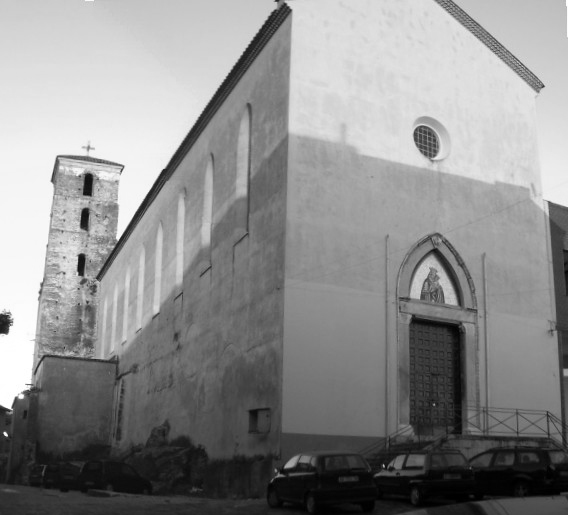
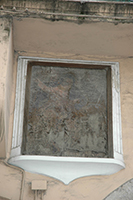
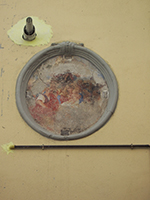
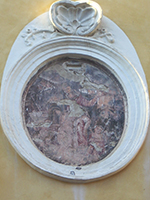
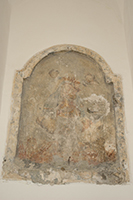
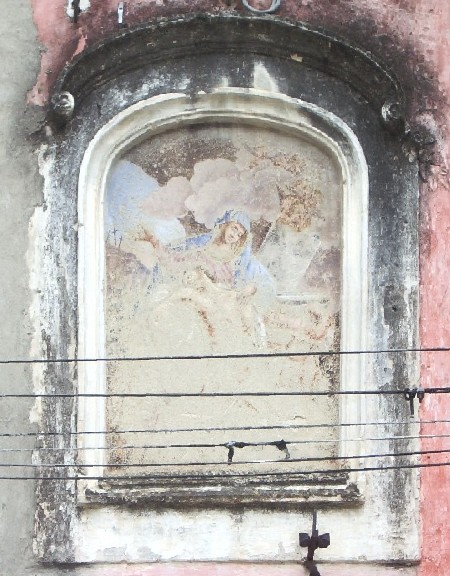
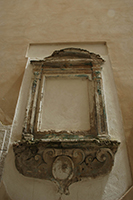
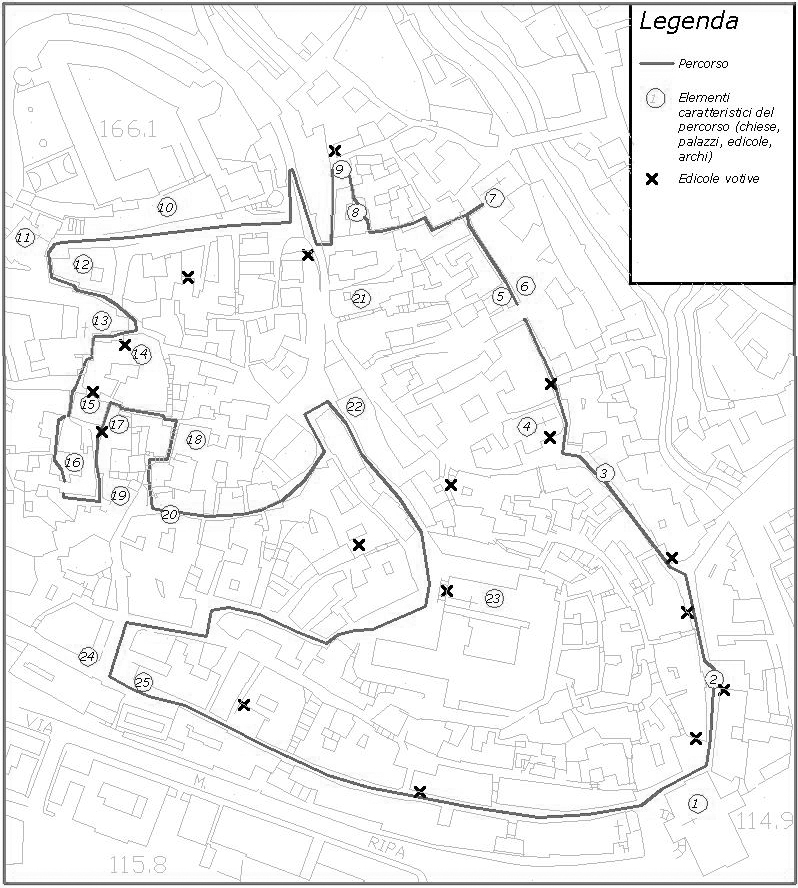
- 1. Church of Santa Maria della Pietà (sec. XII).
- 2. Shrine, canvas (century. XIX) depicting the Pietà.
- 3. Shrine, wall painting (c. XIX) depicting the Nativity.
- 4. Church of San Nicola (sec. XII)
- 5. Shrine, wall painting with frame (sec. XVIII)
- 6. Romano Cesareo Palace (sec. XVIII)
- 7. Church of San Biagio (sec. XIV)
- 8. Marcangione Palace (sec. XVIII) and shrine, painted walls (eighteenth century) depicting the Madonna of Carmelo.
- 9. Stucco Frame(sec. XIX).
- 10. Colonna Castle (sec. XI).
- 11. Church of Santa Maria ad Intra (sec. XIV).
- 12. Palace Martucci (sec. XV).
- 13. Church of Sant 'Antonio de Vienne (sec. XVI) with shrine (sec. XIX) depicting St. Benedict and the Benedictine Sisters monastery (sec. XVI).
- 14. Palazzo de Consulibus /Amore (sec. XVI) and the home of Matteo Ripa.
- 15. Arco Attrizzi (sec. XIII).
- 16. Shrine, majolica (century. XIX) representing the Pietà.
- 17. Novella Palace (sec. XVI) with shrine (sec. XVII) depicting the Madonna del Carmelo.
- 18. Maglione Palace(sec. XVIII).
- 19. La Francesca Palace (sec. XVIII).
- 20. Shrine, wall painting (c. XIX) depicting the Pietà
- 21. Palace Paladino / La Francesca (sec. XVI).
- 22. Palace Campagna (sec. XVII).
- 23. Church of San Francesco and the monumental complex of San Francesco (sec. XIII).
- 24. Stucco Frame (sec. XIX)
- 25. shrine, wall painting (c. XIX) depicting the Pietà.



